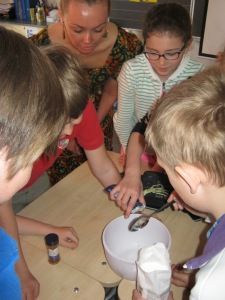Making black millet ugali in Khabakaya Primary school and Rise&Shine special school.
In Kenya, ugali is the name for the most common mealtime starch: a thick, stiff porridge made from white cornmeal or red millet.
Ugali is a very simple dish of milled white maize, cooked with water until it’s very stiff and pulls away from the side of the pan. It’s served in big floppy slabs together with meat and vegetables.
Traditionally, ugali was made with millet – a rich and nutritious grain. But when cornmeal, or maize, found its way to the African continent, it became even more popular as a grain staple.
Millet is a gluten-free grain that is nutrient dense and fibre-rich. It is linked to good heart health, diabetes management, gallstone prevention, in fact, it ranked as one of the world’s healthiest food.
The traditional way to eat ugali is to gather it up in small, thumb-sized balls, pressing it together with the tips of your fingers. Then you make a small indentation on one side and use it to scoop up meat, vegetables, or stews. It’s a substitute for any sort of cutlery at traditional Kenyan tables.





Ingredients for black millet ugali:
1)dried cassava
2) some sorghum
3) black millet
4) roasted meat (red meat)
5) omufume (dried special grass)
6) little bit fresh milk
7) enough salt
Recipe: Bring to boil some water and salt. Add flour to your liking and then spin over very low heat. Cook for about 40 minutes.
Materials:
https://healthylivingkenya.wordpress.com/2014/02/13/how-and-why-to-eat-more-brown-ugali/
http://www.whfoods.com/genpage.php?tname=foodspice&dbid=53
http://www.thekitchn.com/word-of-mouth-ugali-76209
Read all the post by students of Kenya
Read all the posts by Rise and Shine special school
Read all the posts by Khabakaya Primary School




































